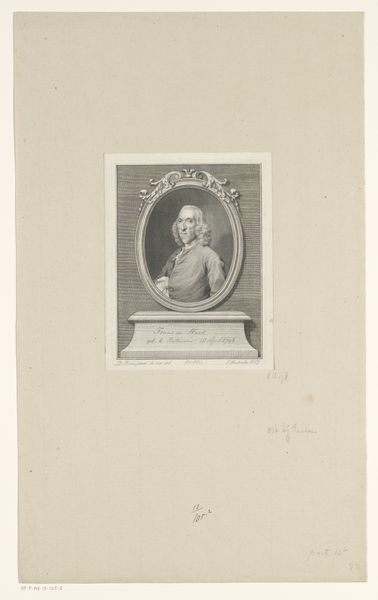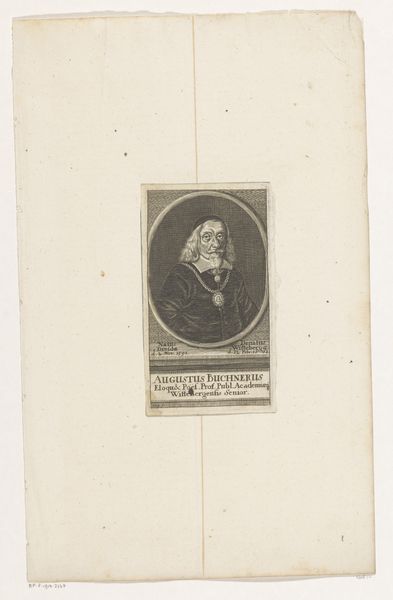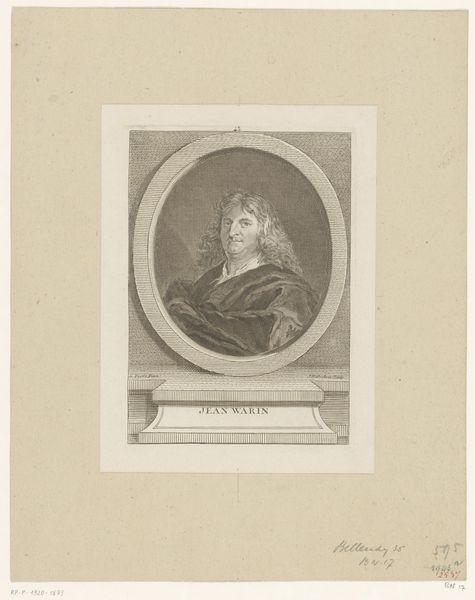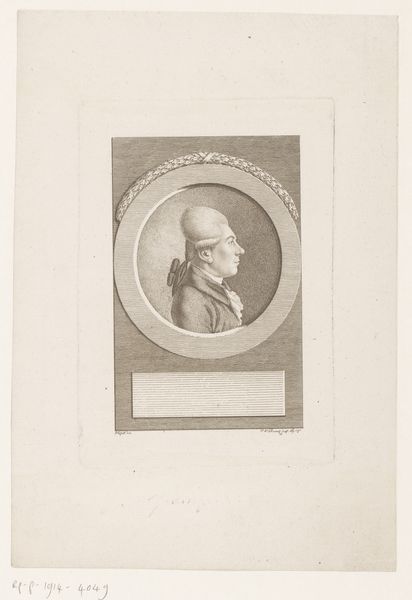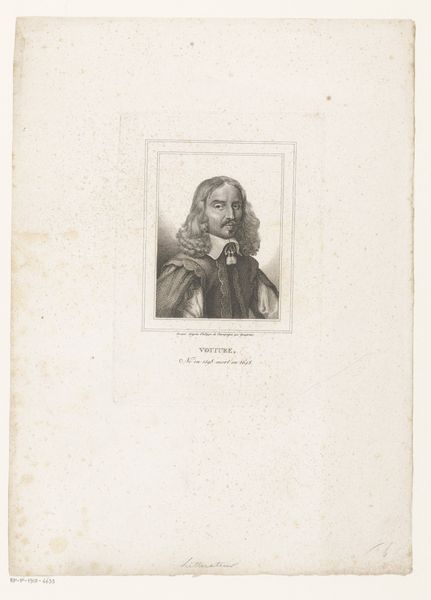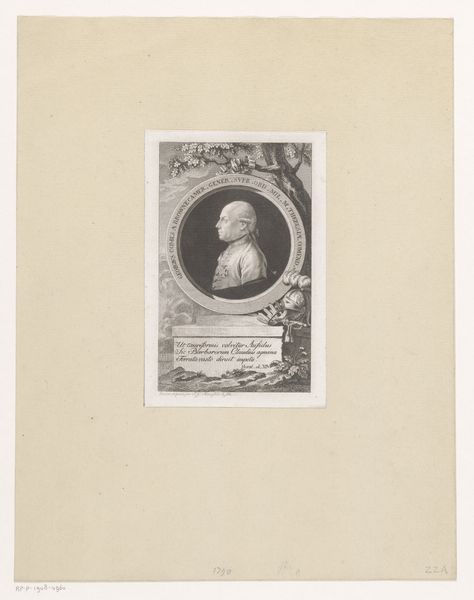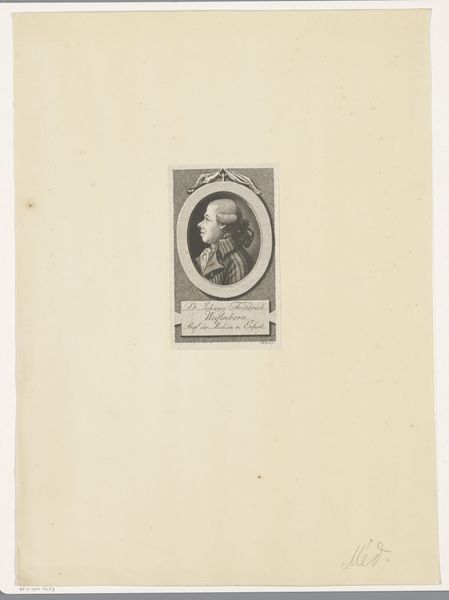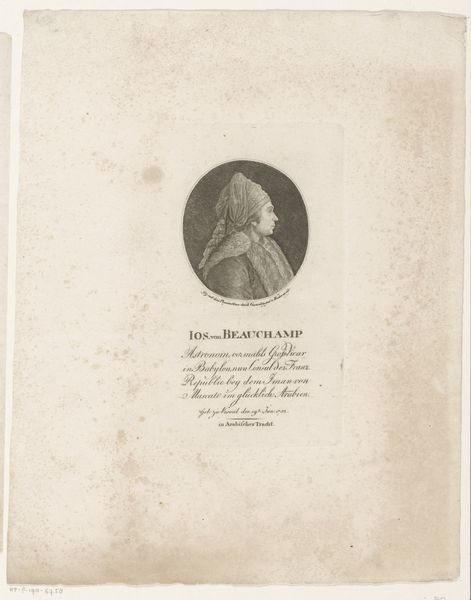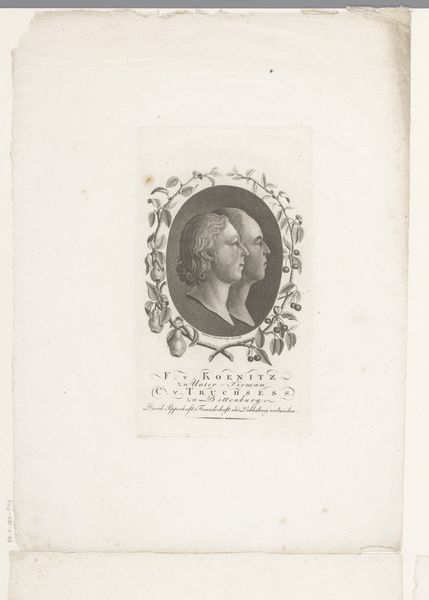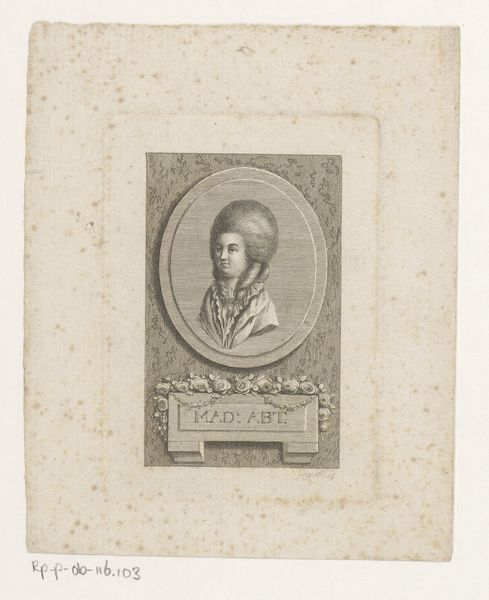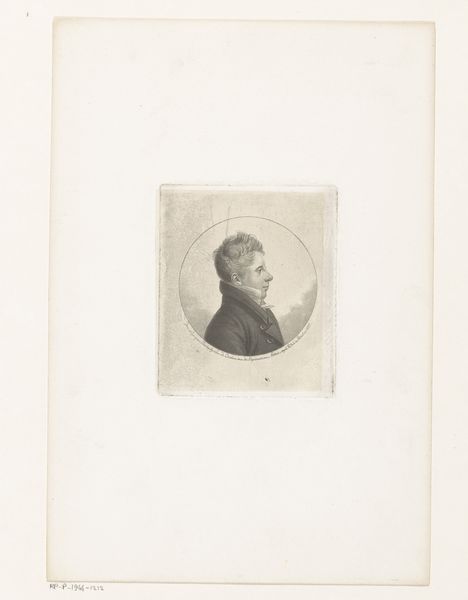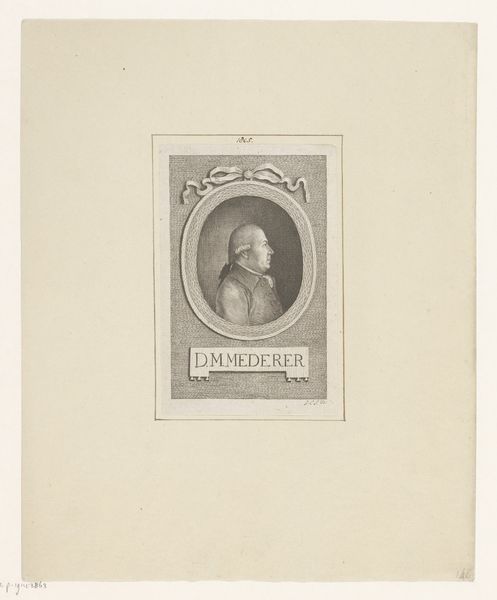
print, engraving
#
portrait
#
neoclacissism
#
aged paper
#
toned paper
#
light pencil work
# print
#
book
#
pencil sketch
#
old engraving style
#
personal sketchbook
#
ink colored
#
sketchbook drawing
#
pencil work
#
sketchbook art
#
engraving
Dimensions: height 249 mm, width 172 mm
Copyright: Rijks Museum: Open Domain
Curator: This is a portrait of the poet Tomás de Iriarte, created in 1792 by Manuel Salvador Carmona. It's an engraving, a print, with delicate ink coloring the toned paper. Editor: The light pencil work gives it a soft, almost melancholic quality. He seems a bit world-weary, doesn’t he? And that cherubic figure looks positively glum. Curator: The engraving technique itself speaks volumes. Carmona was a master of his craft. Look closely at the cross-hatching used to define form and the way light is suggested. The availability of mass-produced prints like this also raises questions about artistic authorship versus skilled labor. Editor: Absolutely. We also have to think about the social context. Iriarte was a figure of the Enlightenment, and Neoclassicism was very much en vogue. The very classical presentation – the oval frame, the suggestion of a sculpted relief, even that seemingly dejected cherub – aligns him with those ideals. What are we meant to take away from a pensive artist? Curator: Think about the labor invested in making the print versus how many copies might have been created and sold! Who would have consumed these images and where might have they been displayed? These details tell us about the production, circulation, and reception of images and ideas at the time. Editor: The implements on the shelf—quills, inkwell, books—and that trumpet design framing him, these act as visual shorthands. They convey Iriarte's profession and passions while associating him with muses in service of creating great art. His social role as enlightened author shapes his entire visual identity, doesn't it? Curator: Exactly, and it brings up the accessibility to these things too. The production, even, of pencils versus quills… Editor: Looking at this, I'm left pondering how artists navigate representing the "self" versus how society shapes one’s perceived identity, even centuries later. Curator: Indeed, this artwork is not simply an image of Iriarte, it’s a point of confluence for process, craft, patronage, and material consumption that offers insights into the broader historical and material conditions of its time.
Comments
No comments
Be the first to comment and join the conversation on the ultimate creative platform.
